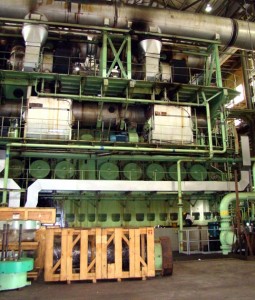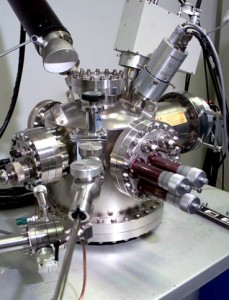- [email protected]
- 1-604-726-5722
Failure Analysis Root Cause Determination
The objective of a metallurgical failure analysis is to find the primary cause. Decisions must be made during any failure analysis, and the results of each step dictate the next procedure. In Matergenics, our Material and Mechanical experts systematically perform required tests as deemed needed based on our detailed failure analysis investigation. In this instance, the proposed test plan should be modified to reflect these changes. It is a waste of resources to routinely perform a series of tests or analyses that may have no relevance to the particular failure root at hand. The following steps are suggested by Matergenics as guidance.
- Background information
- Visual and non-destructive examination
- Physical measurements
- Corrosion examination
- Sample collection for laboratory testing and analysis
- Fractography examination
- Metallographic examination
- Chemical analysis
- Mechanical testing
- Determination of mode of failure and primary cause
- FEA, CFD and other detailed engineering calculations
- Determination of Root Cause
Photographic documentation of the failed section prior to its departure from the project/accident site and upon its arrival at the Matergenitics laboratory must be available to ensure any damage from mishandling is appropriately noted. Before the shipment of the failed section, proper preservation techniques for the fracture surfaces and the section (including coating), if required, should be identified and a chain of custody should be established for transfer of the failed section to our testing facility.
Before the failed section arrives at our testing facility, it should be determined if destructive testing of the failed section has been approved. Only non-destructive testing is allowed in some instances to preserve the samples (e.g. pipe) intact for evidentiary purposes. In some instances destructive testing can only be performed when all interested parties agree to its necessity and a consensus protocol can be crafted establishing those that can witness the destructive tests.
Corrosion Failure Analysis

In corrosion failure analysis of pipe lines and underground assets or process plants, besides a metallurgical analysis of the pipe/component, the internal and external environment of the line pipe must also be considered to arrive at the causal factors that may have caused the line pipe to fail. Therefore, the presence of corrosion products inside and outside the pipe line in the area of the failure must be considered and collected for analysis, as appropriate. For example, soil in the immediate area of the failure, dislodged soil adjacent to the ejected pipe, and soil that had adhered to the line pipe may have to be collected for analysis.
Our capabilities include:
- On-site investigations, digital microscopy, NDT, Corrosion rate assessment, Hardness measurements.
- Analysis of collected samples to determine conformance with specifications
- Welding, soldering & brazing analysis
- Chemical and mechanical testing (ASTM and NACE)
- Metallographic analysis and investigations
- Fracture mechanics
- Engineering calculations including, FEA, and CFD simulations and modeling
- Failure analysis root cause determination
At Matergenics, we determine if a failure is due to material selection, design, fabrication or operating conditions. Mechanical equipment; superheater & boiler tubes; wire cables; pipelines; pressure vessels; forgings; castings; welds/brazes; tools and dies; gears; FRP/PVC pipe; and rebar are just some of the components that we look at in a typical day to determine the root cause of failure. Major corporations that rely on Matergentics specialists expertise include airline industry, Steel Industry, Electronics, Power Plants and many more. These investigations require not only a modern laboratory with light and electron microscopy (SEM & AES), mechanical testing, electrochemical testing, chemical characterization, and fracture mechanic/FEA analysis capabilities but an extensively trained professional team as well.
Although Matergentic’s work is vital to its clients, it is rarely seen by the public. Here are some examples of recent jobs in which Matergentics consultants provided the timely, competent, customer-oriented engineering analysis that made the difference.

- Metallurgical support for a major commercial airline fleet that includes failure analysis investigations, corrosion investigations, and quality control testing.
- Same-day analysis of the effects of a truck fire on the superstructure of a major highway bridge to determine whether or not the highway could remain open.
- Failure analysis of a gas main explosion that caused casualities.
- Failure analysis and remaining life determination of boiler componets in the power industry.
- Electrochemical corrosion evaluation of implant materials such as hips, knees, stents, etc. to improve products and performance.
- Research & Development of coatings and sensors for the construction industry.
